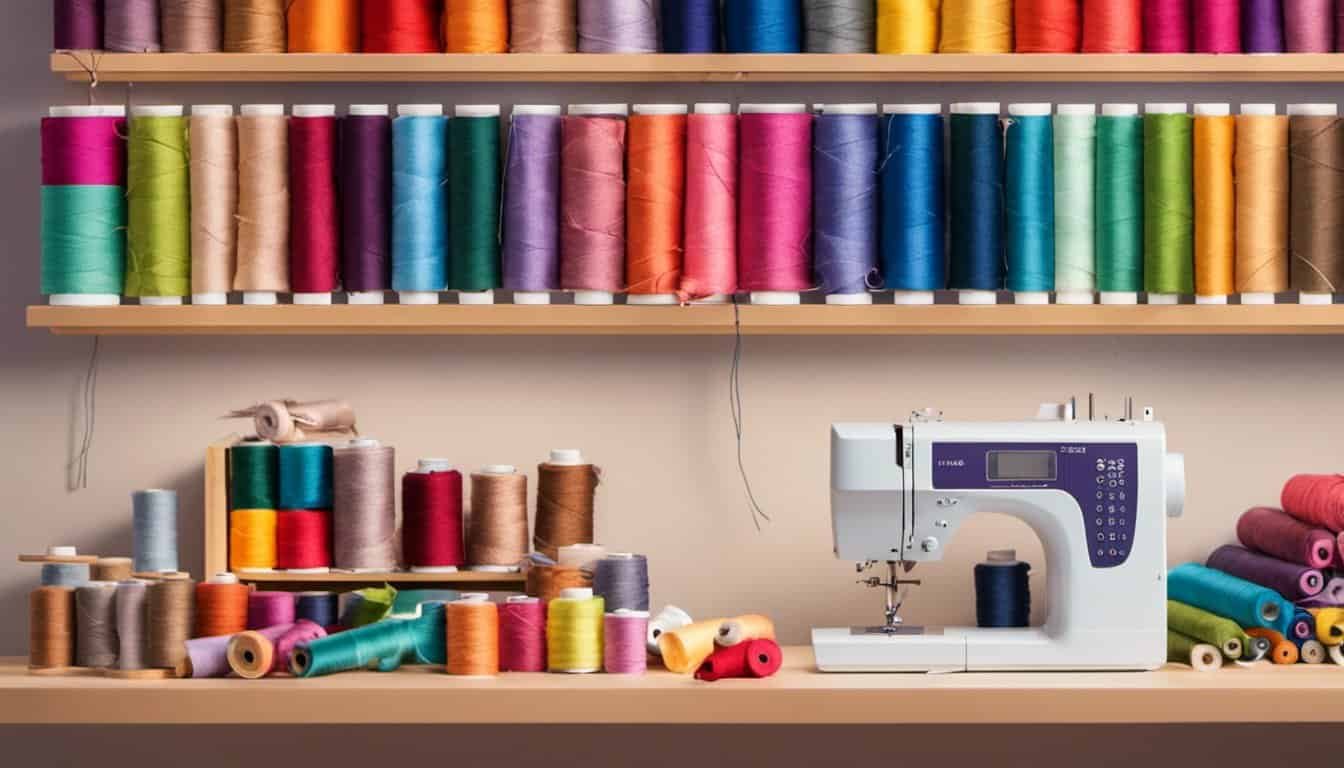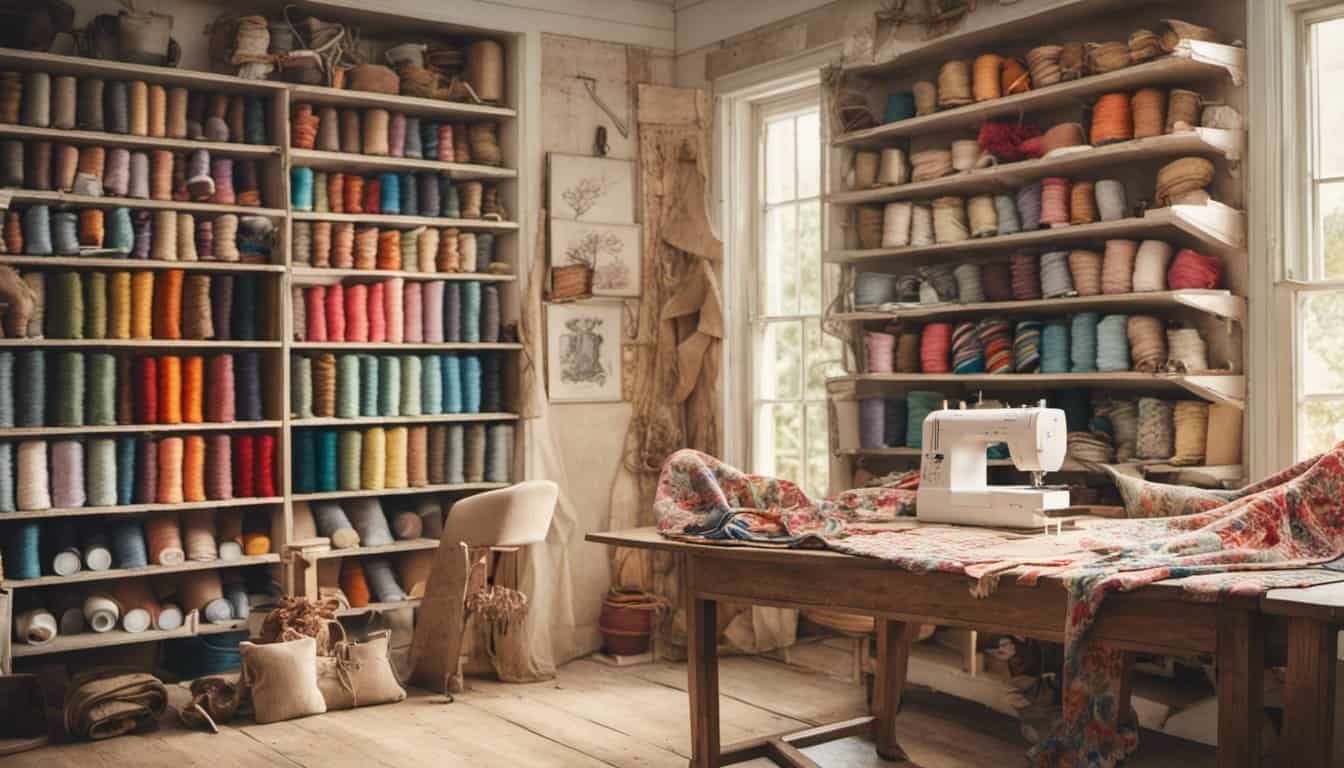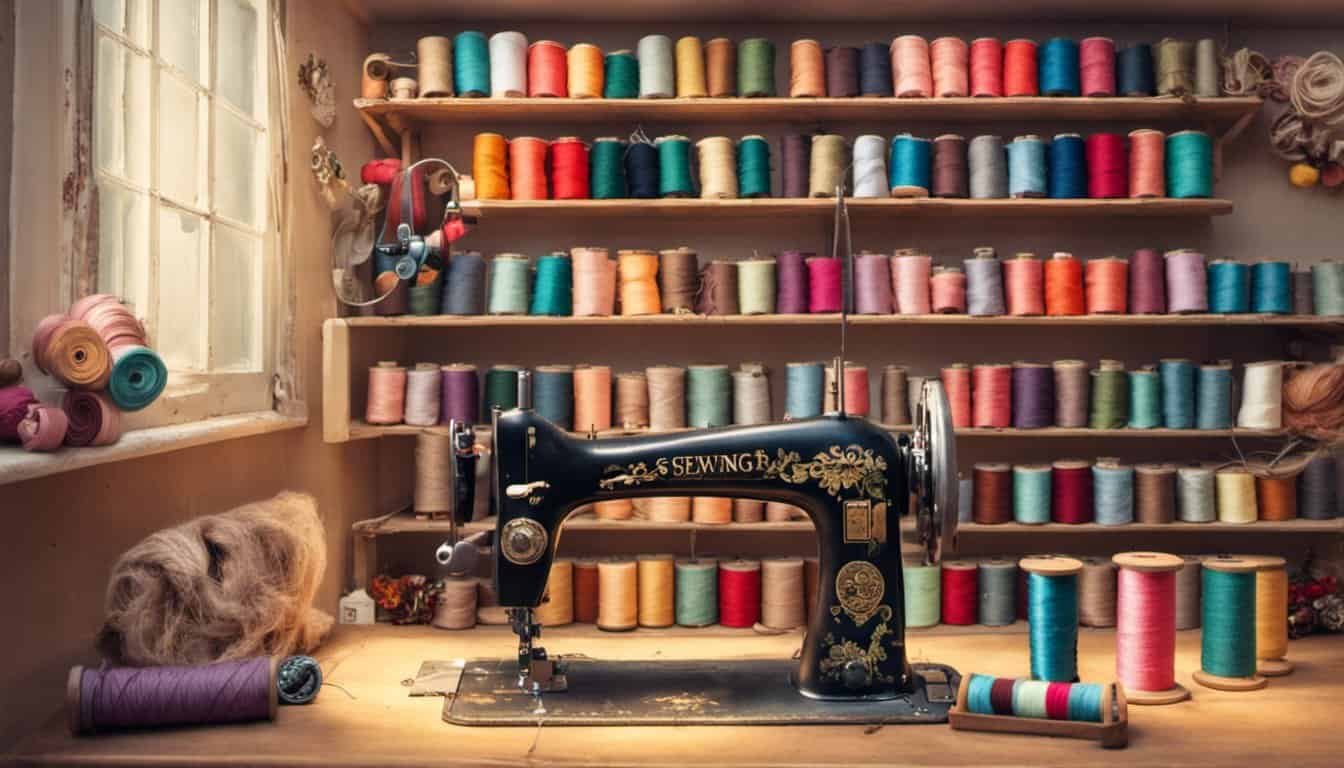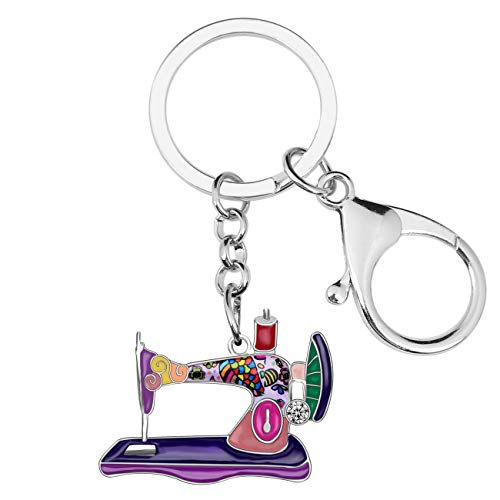When it comes to sewing, there are two main methods: hand sewing and machine sewing. While both techniques can produce beautiful and functional results, they each have their own pros and cons. Understanding the differences between hand sewing and machine sewing can help you decide which method is best for your project.
Hand sewing is a traditional technique that has been used for centuries. It involves using a needle and thread to stitch fabric together by hand. Hand sewing is often preferred for delicate fabrics, intricate designs, and repairs. On the other hand, machine sewing is a faster and more efficient method that uses a sewing machine to stitch fabric together. Machine sewing is often used for larger projects, such as clothing and home decor items.
Key Takeaways
- Hand sewing is a traditional technique that involves using a needle and thread to stitch fabric together by hand, while machine sewing uses a sewing machine to stitch fabric together.
- Hand sewing is often preferred for delicate fabrics, intricate designs, and repairs, while machine sewing is faster and more efficient for larger projects.
- Understanding the pros and cons of each method can help you decide which technique is best for your project.
Understanding Hand and Machine Sewing
As a sewing enthusiast, I often get asked whether hand sewing or machine sewing is better. The truth is, both methods have their advantages and disadvantages, and the choice ultimately depends on the project at hand and personal preference.
Hand sewing is a traditional method of sewing that involves using a needle and thread to stitch fabric together. It is a great introduction to sewing for beginners because it doesn’t require any advanced technology, expensive machinery, or fancy skills. All you need is a needle and single thread, making it a more affordable option. Hand sewing is also great for small repairs and for creating invisible stitches for hems or linings.
On the other hand, machine sewing is faster and more efficient than hand sewing. Sewing machines can handle thicker fabrics and produce more consistent stitches, making it ideal for larger projects. It is also easier to control the tension and stitch length with a sewing machine, resulting in higher quality and more professional-looking finished products.
When deciding between hand and machine sewing, it’s important to consider the following factors:
Project complexity: Hand sewing is better suited for simple projects with fewer pieces, while machine sewing is better for more complex projects with multiple pieces and layers.
Fabric type: Hand sewing is better for delicate fabrics that may be damaged by a sewing machine, while machine sewing is better for thicker, heavier fabrics that may be difficult to sew by hand.
Time and budget: Hand sewing is more time-consuming but requires less equipment, while machine sewing is faster but requires an investment in a sewing machine and accessories.
In conclusion, both hand and machine sewing have their place in the sewing world. While hand sewing is great for beginners and small repairs, machine sewing is better suited for larger projects and thicker fabrics. Ultimately, the choice between the two methods comes down to personal preference and the specific requirements of the project at hand.
Basics of Sewing
As a beginner, getting started with sewing can be overwhelming. However, with the right materials and techniques, sewing can be a fun and rewarding hobby. In this section, I will cover the basics of sewing, including the materials you will need, common sewing techniques, and some simple sewing projects to get you started.
Sewing Materials
To get started with sewing, you will need some basic materials. Here are the essential items you will need to start sewing:
- Needle: A sharp needle is essential for sewing. Choose a needle that is appropriate for the fabric you are working with.
- Thread: Choose a thread that matches the color of your fabric.
- Fabric: Choose a fabric that is appropriate for your project. Cotton is a good choice for beginners.
- Scissors: A good pair of fabric scissors is essential for cutting your fabric.
- Pins: Use pins to hold your fabric in place while you sew.
- Thimble: A thimble can protect your finger while you are pushing the needle through the fabric.
Sewing Techniques
There are several different sewing techniques that you will need to learn as a beginner. Here are some of the most common techniques:
- Running stitch: A simple stitch used for basic sewing.
- Backstitch: A stronger stitch used for sewing seams.
- Zigzag stitch: Used for finishing edges to prevent fraying.
- Whipstitch: Used for hemming and attaching fabric to another piece of fabric.
Sewing Projects
Now that you know the basics of sewing, it’s time to start sewing! Here are some simple sewing projects that you can try as a beginner:
- Pillow: A simple pillow is a great first project. Cut two squares of fabric, sew them together, and stuff with stuffing.
- Quilt binding: Add a binding to a quilt to finish the edges.
- Garments: Start with a simple skirt or dress pattern.
- Clothes repair: Use your sewing skills to repair tears or holes in your clothes.
Remember, the key to success with sewing is practice. Don’t be afraid to make mistakes, and have fun with your projects!
Pros and Cons of Hand Sewing
As someone who has been sewing by hand for years, I can attest to the fact that there are both advantages and disadvantages to this method of sewing. Here are some of the pros and cons of hand sewing:
Advantages of Hand Sewing
Embellishment: Hand sewing allows for a wide range of embellishments and decorative stitches that are difficult or impossible to achieve with a machine. This includes embroidery, beading, and applique.
Therapeutic: Hand sewing can be a relaxing and meditative practice that helps to reduce stress and anxiety. It is a great way to unwind after a long day or to take a break from the hustle and bustle of daily life.
Portable: Hand sewing is a portable craft that can be done almost anywhere. All you need is a needle, thread, and fabric, making it a great option for travel or for sewing on-the-go.
Precise: Hand sewing allows for precise stitching and greater control over the finished product. This is especially important when working with delicate fabrics or when creating invisible stitches.
Personal Touch: Hand sewing adds a personal touch to your projects and gives them a unique, handmade feel. It is a great way to showcase your creativity and individuality.
Disadvantages of Hand Sewing
Slow: Hand sewing is a time-consuming process that requires patience and dedication. It can take much longer to complete a project by hand than it would with a machine.
Difficult to Learn: Hand sewing can be difficult to learn, especially for beginners. It requires practice and a lot of trial and error to master the various stitches and techniques.
Inconsistent: Hand sewing can be inconsistent, as it is difficult to make all stitches the same length and distance apart. While this can add to the charm of a handmade item, it can also make it look less polished or professional.
In conclusion, hand sewing has both advantages and disadvantages. While it may be slower and more time-consuming than machine sewing, it offers greater precision and control, as well as the opportunity for unique embellishments and personal touches. However, it can also be difficult to learn and inconsistent in its results. Ultimately, the choice between hand sewing and machine sewing depends on personal preference, skill level, and the specific needs of each project.
Pros and Cons of Machine Sewing
As someone who has experience with both hand sewing and machine sewing, I can say that there are definitely pros and cons to using a sewing machine. Here are some advantages and disadvantages to keep in mind:
Advantages of Machine Sewing
One of the biggest advantages of machine sewing is speed. With a foot pedal, you can sew quickly and efficiently, which is especially helpful for larger projects. Additionally, machine sewing is generally more convenient than hand sewing. You don’t have to worry about finding a good space to work in, and you don’t have to spend as much time physically sewing each stitch.
Another advantage of machine sewing is accuracy. With a machine, you can sew even stitches in a straight line, which can be difficult to achieve with hand sewing. This is especially important if you’re working on a project that requires precision, such as a quilt or a tailored garment.

Disadvantages of Machine Sewing
One of the biggest disadvantages of machine sewing is the learning curve. Sewing machines can be intimidating at first, especially if you’re not used to working with machinery. It can take some time to learn how to properly thread the machine, adjust the tension, and use different stitches.
Another disadvantage of machine sewing is the financial investment. Sewing machines can be expensive, especially if you’re looking for a high-quality machine with lots of features. Additionally, you’ll need to factor in the cost of electricity to run the machine.
Finally, machine sewing may not be the best option for all projects. While it’s great for larger projects and those that require precision, hand sewing may be better for smaller projects or those that require a more delicate touch.
Overall, machine sewing has its pros and cons, but it’s definitely worth considering if you’re looking for a faster, more efficient way to sew. Just be prepared for a bit of a learning curve and a financial investment.
Specific Sewing Tasks
« How to Fix a Sewing Machine Handwheel: Quick and Easy Solutions
Why Your Sewing Machine Might Be Jamming: Common Causes and Solutions »
When it comes to specific sewing tasks, both hand sewing and machine sewing have their advantages. Here are some common sewing tasks and which method may be better suited for the job.
Sewing Buttons and Buttonholes
When it comes to sewing on buttons, both hand sewing and machine sewing can work well. However, hand sewing may be better for delicate fabrics or when you need more control over the placement of the button. For buttonholes, machine sewing is usually the way to go. Most sewing machines come with a buttonhole foot that makes creating buttonholes quick and easy.
Hemming and Mending
Hand sewing is great for hemming and mending clothes. It allows for more precision and control, which is especially important when working with delicate fabrics. Machine sewing can also be used for hemming and mending, but it may not be as precise as hand sewing. However, if you have a lot of hemming or mending to do, using a machine can be a real time-saver.
Working with Different Fabrics
When it comes to working with different fabrics, both hand sewing and machine sewing can be used. However, there are some fabrics that are better suited for one method over the other. For example, leather is best sewn by hand, while delicate fabrics like chiffon are better suited for machine sewing. When working with any fabric, it’s important to choose the right needle and thread for the job.
Creating Embroidery and Lace
Hand sewing is the way to go when it comes to creating embroidery and lace. It allows for more control over the stitches and can create a more delicate and intricate design. Machine sewing can also be used for embroidery and lace, but it may not be as precise as hand sewing.
Overall, both hand sewing and machine sewing have their advantages when it comes to specific sewing tasks. It’s important to choose the right method for the job to ensure the best results. Remember to baste your work before sewing, knot your thread, and use backstitching to ensure quality repairs. And don’t forget to have fun and experiment with different sewing projects!

Choosing Between Hand Sewing and Machine Sewing
When it comes to sewing, you have two main options: hand sewing and machine sewing. Both techniques have their advantages and disadvantages, and the choice between them will depend on a variety of factors, including your skill level, the project you’re working on, and your personal preferences.
Advantages of Hand Sewing
One of the main advantages of hand sewing is that it allows for greater precision and attention to detail. When sewing by hand, you have more control over the stitching and can create more detailed designs. This makes it a great option for projects that require a high level of precision, such as embroidery or detailed garment construction.
Hand sewing is also a great option for beginners, as it doesn’t require any special equipment and can be done almost anywhere. It’s also a good way to learn basic sewing skills, such as how to thread a needle and create basic stitches.
Advantages of Machine Sewing
Machine sewing, on the other hand, is generally faster and more efficient than hand sewing. It’s a great option if you’re working on a project with a tight deadline, or if you need to create multiple items quickly.
Machine sewing is also a good option for more complex projects, such as garment construction or quilting. It allows for more durable and consistent stitching, which is important for items that will be worn or used frequently.

Disadvantages of Hand Sewing
While hand sewing has its advantages, it can also be more time-consuming than machine sewing. It’s not always the best option if you’re working on a project with a tight deadline or need to create multiple items quickly.
Hand sewing also requires a certain level of skill and patience, and may not be the best option for beginners or those who are not particularly detail-oriented.
Disadvantages of Machine Sewing
Machine sewing, while generally faster and more efficient than hand sewing, can also be more expensive. Sewing machines can be costly, and you’ll also need to invest in accessories such as needles, thread, and bobbins.
Machine sewing also requires a certain level of skill and practice, and may not be the best option for beginners. It can also be less precise than hand sewing, particularly when it comes to more detailed designs.
In the end, the choice between hand sewing and machine sewing will depend on a variety of factors, including your skill level, the project you’re working on, and your personal preferences. Whether you’re a beginner or a professional seamstress, there are advantages and disadvantages to both techniques, and it’s important to choose the one that’s right for you.

Frequently Asked Questions
What are some common hand sewing stitches?
There are several common hand sewing stitches, including the running stitch, backstitch, whip stitch, and blanket stitch. The running stitch is a simple stitch that is commonly used for basting and gathering. The backstitch is a stronger stitch that is often used for seams and hems. The whip stitch is a decorative stitch that is used for finishing edges, while the blanket stitch is used for creating decorative edges and attaching appliques.
What are the necessary tools for hand sewing?
The necessary tools for hand sewing include needles, thread, scissors, thimble, and fabric. Needles come in various sizes and types, depending on the fabric and type of stitch being used. Thread also comes in different sizes and types, including cotton, silk, and nylon. Scissors are used for cutting fabric and thread, while a thimble protects the finger from the needle. Fabric can be any type of material, depending on the project.
What is a handheld sewing machine?
A handheld sewing machine is a small, portable sewing machine that is operated by hand. It is designed for quick repairs and small projects, and is ideal for those who do not have a lot of space or money for a full-sized sewing machine. Handheld sewing machines are easy to use and come with a variety of features, such as adjustable stitch length and speed control.
What are the similarities between hand sewing and machine sewing?
Both hand sewing and machine sewing involve stitching fabric together to create a finished product. They both require the use of needles and thread, and can be used for a variety of projects. Both methods can create strong and durable seams, although machine sewing is generally faster and more efficient.
What are the differences between hand sewing and machine sewing?
The main difference between hand sewing and machine sewing is the speed and efficiency. Hand sewing is a slower process that requires more time and patience, while machine sewing is faster and more efficient. Hand sewing can be more precise and accurate, while machine sewing is better for large projects and heavy fabrics. Hand sewing is also more portable and requires fewer tools, while machine sewing requires a larger workspace and more equipment.

Is it better to sew by hand or machine?
The answer to this question depends on the project and personal preference. Hand sewing is better for smaller projects and delicate fabrics, while machine sewing is better for larger projects and heavy fabrics. Hand sewing can be more precise and accurate, while machine sewing is faster and more efficient. Ultimately, the choice between hand sewing and machine sewing comes down to personal preference and the specific needs of the project.

















